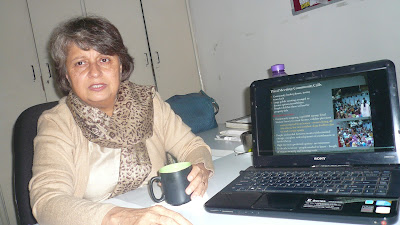I met with Renu Koshla, the head of the
Centre for Urban and Regional Environments (CURE) in suburban Delhi. I have
visited Renu before and had visited some of the projects she is working on. We
had a long discussion about the role of women architects and planners and the role
of women generally in India. Renu is not an architect but works with architects
and planners closely. Her concern is that architects and engineers are trained
to work on big projects and not the iterative processes that slum renewal
requires.
Renu believes that slum renewal requires a
micro design approach and a problem solving process of many small parts. She
believes that officials from Municipal Corporations can be patronizing and that
they tend to force designs for slum renewal into formal grid like patterns. This
is very different to the organic patterns that evolve in slums and villages.
Indian slums represent 18-19% of the
Indian population with 40% of Delhi's population living in slums. Renu prefers
to improve slums in situ but this is often difficult because of the poor
quality of construction and of materials. In the village of Kachhpura in Agra CURE
have improved the slums in situ but at Savda Ghevra the Delhi Municipal Corporation
had relocated slums to a city edge site and CURE's role was to help improve
conditions.

No comments:
Post a Comment